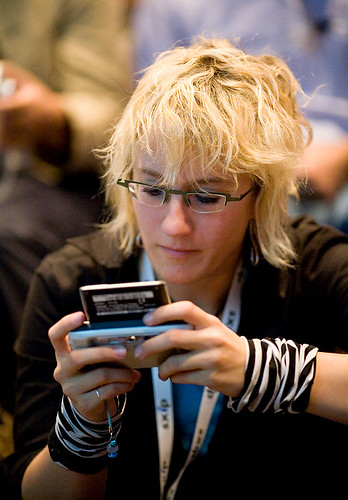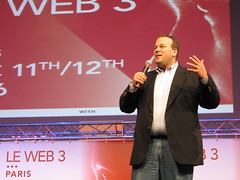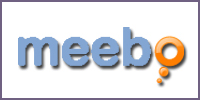![]() Facebook is a combination of Web 2.0 companies. That’s one way to look at it. The flip side – and more accurate – is to say that there are many Web 2.0 companies that are taking a piece or feature of Facebook and making an entire service out of it. Not the most original strategy, but it does seem to work (at least for some).
Facebook is a combination of Web 2.0 companies. That’s one way to look at it. The flip side – and more accurate – is to say that there are many Web 2.0 companies that are taking a piece or feature of Facebook and making an entire service out of it. Not the most original strategy, but it does seem to work (at least for some).
Obviously the core pieces of Facebook have been companies already and are very common features around the web. Features such as:
- Facebook Mail: this feature is exactly like regular mail applications and the FB version of mail is becoming more like traditional email every day. You can send mail to anyone (even if they’re not on FB) and soon be able to receive mail there too.
- Photos: Facebook has the largest photo service on the web and deservedly so as they took the traditional album upload sites like Snapfish/oPhoto and made them social.
- Events: They made a much better and easier to use Evite service.
These features have been around for a while, so it’s nothing new that they’ve also been standalone companies. The new services are the interesting ones. What i’m thinking of in particular is:
- Facebook Share: This is a feature that let’s people post items they see around the web on to their facebook profile. New services such as Tumblr let you repost things very easily too. Don’t call it a blog b/c it’s much more lightweight but it is really more or a repost feature with comments – like the Share.
- Facebook Status: What are you doing right now? This feature has been around on FB for a long time and now the company Twitter has taken that made it more mainstream, with an API and with other features. In fact, i’ve already blogged about how the two are the same.
- News Feed: The Facebook News Feed is essentially an RSS reader of your friend’s activity. This concept is not lost on everyone else and a few companies are focusing directly on that. Specifically Plaxo & FriendFeed. They allow you to enter in sites that capture your activity and then they repost it to your friends.

Whether these services can survive as standalone applications, i’m not sure. I’m somewhat doubtful that there is a business there, but if you can get an audience doing these things, you should be able to monetize it.
Obviously, Facebook is not going to build a feature better than a standalone service can (although they often do), but they are able to integrate it into everything they offer. Items like Events work well on Facebook because they are easily shared and posted around FB. This “threading” is crucial for their success. Ultimately Facebook won’t win in trying to be everything to everybody, but they at least have to try to be most of the core services all in one place – and in this respect FB does a great job.
 I also read today that Friendster is still hanging around. The top social networks in the world are:
I also read today that Friendster is still hanging around. The top social networks in the world are: I’ve been a long-time facebook user. Dartmouth was one of the first 10 schools on the service in 2000-2001 and you could tell even back then that it was a special service. I’ve always thought it was the best social network – even as MySpace and others came around.
I’ve been a long-time facebook user. Dartmouth was one of the first 10 schools on the service in 2000-2001 and you could tell even back then that it was a special service. I’ve always thought it was the best social network – even as MySpace and others came around. Photos. Supposedly this was the feature that spurned The Platform (see below). This feature is very similar to other services like Yahoo Photos, Photobucket, etc. except with one exception – it’s social. You can tag people in your photos and when you do it – that photo shows up in that user’s profile. In the past, if a friend of yours had a photo of you, this was never identified and you would never know. Or if you see a person in a picture with your friend, you can see who that person is and click through to their profile. Facebook made photo viewing easy and made it social feature instead of just a way to enhance your profile. This caused the facebook photo sharing to be the most popular photo network on the web (or at least a close #2). Check out
Photos. Supposedly this was the feature that spurned The Platform (see below). This feature is very similar to other services like Yahoo Photos, Photobucket, etc. except with one exception – it’s social. You can tag people in your photos and when you do it – that photo shows up in that user’s profile. In the past, if a friend of yours had a photo of you, this was never identified and you would never know. Or if you see a person in a picture with your friend, you can see who that person is and click through to their profile. Facebook made photo viewing easy and made it social feature instead of just a way to enhance your profile. This caused the facebook photo sharing to be the most popular photo network on the web (or at least a close #2). Check out  Last week facebook came out with a new feature called F8 and also known as The Platform. This is a huge deal and it will change the web for millions of users. This feature allows any company to develop an application to live inside Facebook and makes it easy for any facebook user to install, share and use. With this feature, facebook is now a platform of users and friends available for any application or company to access. I repeat, this is huge. It has always been my thought that going forward social networking is a foundational attribute of the web. Any activity you do online – shopping, reading, watching videos – is enhanced if you can see what your friends are doing (or have done) and can easily share it with them. For any traditional site (BestBuy.com, Google Maps, Fandango, etc.), it could be much better if it was built into facebook and showed you what your friends had purchased, or had done, or what their opinion is. I already love using the flickr, netflix, delicious, and other facebook applications that have been created in the first week and i’m positive the quality will only get better.
Last week facebook came out with a new feature called F8 and also known as The Platform. This is a huge deal and it will change the web for millions of users. This feature allows any company to develop an application to live inside Facebook and makes it easy for any facebook user to install, share and use. With this feature, facebook is now a platform of users and friends available for any application or company to access. I repeat, this is huge. It has always been my thought that going forward social networking is a foundational attribute of the web. Any activity you do online – shopping, reading, watching videos – is enhanced if you can see what your friends are doing (or have done) and can easily share it with them. For any traditional site (BestBuy.com, Google Maps, Fandango, etc.), it could be much better if it was built into facebook and showed you what your friends had purchased, or had done, or what their opinion is. I already love using the flickr, netflix, delicious, and other facebook applications that have been created in the first week and i’m positive the quality will only get better. I wrote a few weeks ago (
I wrote a few weeks ago ( The technorati are
The technorati are 
 My friend danah boyd gave a talk at the Etech conference last month
My friend danah boyd gave a talk at the Etech conference last month  10-10:30: Real World and why it matters: Hans Rosling
10-10:30: Real World and why it matters: Hans Rosling 2-2:20: State of the Blogosphere (David Sifry, CEO of Technorati)
2-2:20: State of the Blogosphere (David Sifry, CEO of Technorati) resumes are “very 1.0, sometimes lack information, and they lack metadata.” They should be demonstration of expertise which they currently aren’t. LinkedIn is trying to become the next version of that resume. He also sees Business 2.0 right around the corner and what are the new set of business applications. So many professionals are online, there will be increased collaboration
resumes are “very 1.0, sometimes lack information, and they lack metadata.” They should be demonstration of expertise which they currently aren’t. LinkedIn is trying to become the next version of that resume. He also sees Business 2.0 right around the corner and what are the new set of business applications. So many professionals are online, there will be increased collaboration Buy Meebo
Buy Meebo Unless you’ve been living under a stone you’ve heard of Second Life – the virtual world where real people in real places can make virtual people and virtual places. Real people and companies have been flocking to it over the past few months. Now i read that there’s the first homeless guy in there. However, this is not some guy in Second Life who’s out to just get in your way while you’re walking down the street asking for a quarter. No, this guy is the result of
Unless you’ve been living under a stone you’ve heard of Second Life – the virtual world where real people in real places can make virtual people and virtual places. Real people and companies have been flocking to it over the past few months. Now i read that there’s the first homeless guy in there. However, this is not some guy in Second Life who’s out to just get in your way while you’re walking down the street asking for a quarter. No, this guy is the result of  We launched Qloud yesterday and it’s been a crazy ride. The response to the idea and the site has been positive. We were first reported (
We launched Qloud yesterday and it’s been a crazy ride. The response to the idea and the site has been positive. We were first reported (